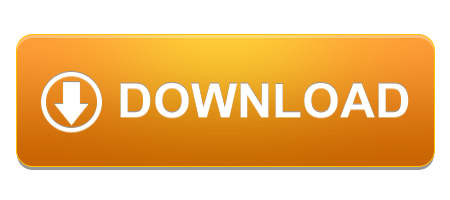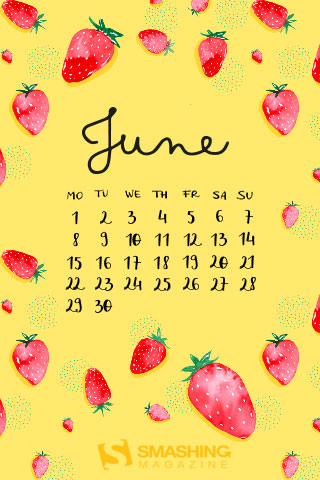
It's hard to not have any smart tech in your home these days. Smart home tech is fairly ubiquitous, and most of us have some form of it in the house. Many of these products also utilize Apple's HomeKit (check out our ultimate guide), so you can control your house gadgets directly with your iOS device or even Mac.
But how do you get started with it on the Mac? Don't worry, we're going to walk you through it now.
Jan 28, 2020 Get It Done is a simple but powerful to-do list and project manager. Sync wirelessly with GetItDoneApp.com or just use your Mac to organize your tasks. Based off the book Getting Things Done by David Allen, Get It Done lets you focus on what's important for today and keeps everything else out of. Things ® Todoist ® Trello ® Wunderlist ® We offer GTD Setup Guides on the software programs listed above. Visit our online store for details. List Manager Add-ons. EProductivity TM for Lotus Notes. EProductivity for Lotus Notes has earned the distinction of GTD Enabled, as David Allen was directly involved in the design of this application. Built specifically for GTD. GTD (Getting Things Done) by David Allen is a proven method for productivity. Everdo was designed to make getting things done easy and sustainable. It has all the tools needed to follow the method, such as projects, next actions, contexts, time and energy labels, areas, and more. Simple productivity app to get things done. Flow is a minimalistic pomodoro based focus timer for Mac. Increase your productivity and reduce stress at the same time.
How to set up Home app on Mac
Unfortunately, you can't directly set up the Home app on your Mac. Instead, you'll need to set it up on your iOS device first.
Applications for task management based on Getting Things Done (GTD), the productivity method by David Allen. It includes apps for iPhone, iPad, Android, Mac and Windows. May 15, 2020 This to-do list app is a perfect fit for individuals following the GTD approach as it comes with a dedicated toolset to help you get things done faster. Add actions, categorize them through tags, and then use perspectives to plan the next big thing in your schedule.
- Make sure that your HomeKit accessory is powered on and near your iOS device. You'll also want to double check if there is any additional equipment you need for it to work with iOS (i.e. Philips Hue Bridge for Philips Hue bulbs).
- On your iOS device, launch the Home app.
Tap on Add Accessory.
Scan the accessory's eight-digit HomeKit or QR code with your iOS device's camera. For those using an iPhone 7 or later and there's an NFC wireless icon on the accessory, you may hold your iPhone near the accessory to add it to the Home app.
- Tap on your accessory when it pops up on the screen to add it. If the prompt Add Accessory to Network pops up, select Allow.
Give your accessory a name and then assign it to a room. Organizing by room makes it easier to identify accessories in the Home app and control them with Siri.
- Tap Done.
In order to get your HomeKit accessories to show up in the Home app on Mac, you'll need to be signed in on the same Apple ID on both devices, have iCloud Keychain turned on, and make sure Home is toggled on in your iCloud Settings. Both iOS and your Mac should be updated with the latest software.
It's a bit disappointing that you're unable to add new accessories directly in the Mac version of the Home app, but you can still get most of the other features that Home is capable of.
Getting started with Home on macOS
When you first launch the Home app on your Mac, it'll ask for permission to connect to your iCloud account. When it gains access, it'll check for all of your HomeKit devices and add them to your 'Favorites' by default.
To turn a device ON/OFF, just click on it. Grayed out icons means that the device is currently OFF, while white means it's ON.
Right-click on a device and you'll get two options: Show Controls and Settings. The Settings allows you to do things like renaming your devices, which is useful when moving things around the house.
Settings will allow you to see the device name and room. From here you can add a device to your favorites list, include or exclude it from status updates (they are included by default), group accessories, and see details about the device manufacturer, model number, firmware, and serial number.
When you click on Show Controls, you'll have access to such things as dimming the lights, adjusting temperature, and more, depending on the devices you have. For those who use Philips Hue whit and color bulbs, Show Controls would also give you the option to change the color of your lights.
Automation for all
Even though it seems that Home for macOS is a little half-baked with the fact that you can't add devices directly, it's still a useful tool to have. Using the Home app from your Mac means you don't have to look for your iPhone or tablet if you're at the desk and want to turn the lights off in a room that you're not using. Or if you want to lower the temperature in the house a bit, and your iOS device isn't right next to you, but you're at the computer, just do it from there. It's never been easier, especially if you're lazy.
If you're not convinced about smart home tech, maybe the ability to control your house from your computer will change that.
HomeKit
Main
We may earn a commission for purchases using our links. Learn more.
power balance

New EU regulations target App Store, empowering developers
The EU has introduced new regulations and measures to help protect developers and publishers who deal with storefronts like the App Store.
For many of us, lists are necessary when it comes to getting things done. We end up with so many tasks during the day, it's hard to remember every single thing that needs to be done unless it's laid out in an organized list or project in front of us. This is especially true for those of us who are in front of our Macs all day long, so here are the best to-do apps for Mac to help you stay on task.
Things
Things is my personal favorite of the bunch. While it appears simple, it actually has a lot of powerful features but is still super intuitive and easy to use, even for non-power-users.
For one, you can easily capture new tasks into Things from anywhere, no matter what app you're in, thanks to the Quick Entry feature. I also love the fact that you can create 'Goals' and add projects into them, and you can see your progress from there. And when creating tasks, it's easy to add notes, make it recurring, assign a due date or deadline, add tags for organization and searching, create nested checklists, and flag priority items.
I've been using Things for a few years now, and it's my go-to app when it comes to staying on top of everything. This is especially true when you integrate your calendars into Things as well, so you get everything in your schedule at once.
OmniFocus 3
If you want even more powerful features than Things, then you should look at the opposite side of the coin: OmniFocus 3.
OmniFocus 3 follows in the more traditional GTD (Get Things Done) format, which can take some time to learn and understand fully. But once you get the hang of it, OmniFocus 3 becomes incredibly powerful. There are a ton of ways for you to organize your tasks, such as location, project, context, priorities, people, and much more. There are now enhanced repeating tasks, so you can set things up like 'on the first weekday of each month.' OmniFocus 3 also supports attachments (graphics, video, audio), making it even more invaluable to those who need these things for their tasks.
OmniFocus 3 is free to download and try for 2-weeks. If you want to get the Standard version, it will be $50. There's also a Pro version that costs $100, though you can get it for $50 if you upgrade from Standard.
Todoist
Todoist is another great service to check out, and it's especially useful for those who like automation and insights.
With Todoist, you'll get your basic task management features, including a way to quickly add a task with a natural language parser. But the real magic with Todoist lies behind all of the app integrations, including IFTTT, Slack, Zapier, Amazon Alexa, and more. There are more than 60 of them to go through, so there are a ton of possibilities with what you can do with Todoist.
While Todoist is free to use forever, you can also upgrade to Premium for things like long-term goals and planning. But if you don't need the extras, then the free version should be fine.
Get Things Done App For Mac
Microsoft To-Do
Since Microsoft bought Wunderlist a while back, they've been using that to help develop their own task management software called Microsoft To-Do. And it just recently became available on the Mac.
With Microsoft To-Do, managing your tasks has never been easier. You can create as many lists as needed, and assign them all a color for easy recognition. All of your lists will become available on any device, as long as you sign in to your account. Your tasks can be broken down into more manageable steps if needed, and there is support for files and notes.
A unique feature is the 'suggested tasks,' which may help you remember things you'll otherwise forget. It's personalized just for you and is designed to help you stay focused. Microsoft To-Do also syncs with Outlook, giving you a seamless experience. And if you need to share your lists with friends, family, or coworkers, it's no problem!
2Do
Things To Download On Mac
If you like the idea of GTD, but don't want to be over-intimidated by software like OmniFocus, then you should give 2Do a try. It's like OmniFocus, but much easier to pick up and use.
One of the best features of 2Do is the ability to create simple tasks, checklists, or even projects with sub-tasks. Every task item in these can have notes, attachments, and even multiple alarms (sometimes we need that extra push). 2Do also not just does lists, but there are smart lists, which utilize filters and custom views. There is tag support to make organization a breeze, as well as a ton more features.
I used 2Do (along with everything else here) a while ago and must say that it's definitely one of the more underrated to-do apps out there.

Any.do
If sharing is a big priority for you when it comes to task management, then Any.do should be on the top of your list.
Any.do features a clean and smart design that is easy for anyone to pick up the app and start using it without fuss or hassles. You can share lists or even tasks themselves with others, such as your spouse, a family member, friend, or coworker. Any changes are pushed immediately, so you work together in real-time. The cloud syncing is fast and seamless, and there's also support for subtasks, attachments, notes, and more. Any.do can capture and do it all!
Any.do is free to download and use, but there are more features in the Premium subscription. This includes unlimited access to moments, themes, files, and collaboration for $3 a month or $27 a year.
Your favorite?
These are some of the best to-do apps we found on the Mac App Store. What are your favorites? Let us know in the comments!
We may earn a commission for purchases using our links. Learn more.
power balanceNew EU regulations target App Store, empowering developers
The EU has introduced new regulations and measures to help protect developers and publishers who deal with storefronts like the App Store.